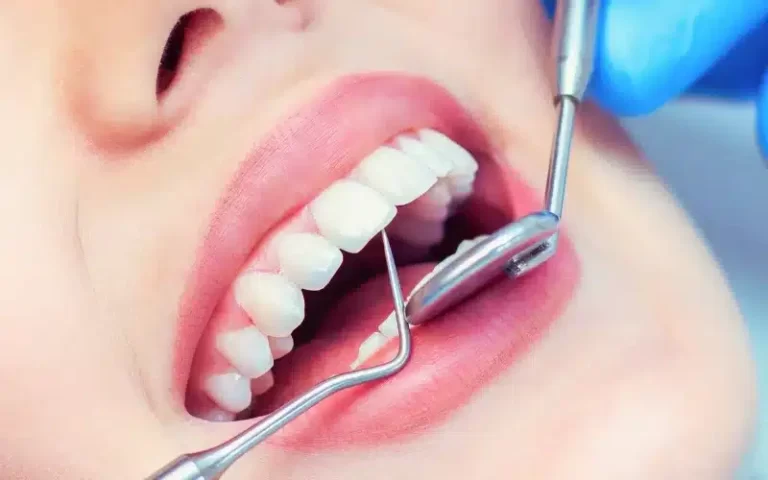Proving causation in Suboxone lawsuits presents significant challenges due to the complex nature of the drug’s effects and the myriad of factors involved. Suboxone, a medication used to treat opioid addiction, contains buprenorphine and naloxone, which can produce various side effects. Establishing a direct link between Suboxone use and specific adverse outcomes requires thorough medical and scientific evidence.
Plaintiffs must demonstrate that Suboxone was the primary cause of their injuries, often necessitating expert testimony and extensive medical records. Additionally, the presence of underlying health conditions and concurrent use of other medications can complicate causation. Defendants may argue alternative causes for the plaintiffs’ injuries, further complicating the legal battle. This complexity underscores the necessity for meticulous legal and medical analysis to substantiate claims and secure justice for those affected.
What Is Suboxone?
Suboxone is a medication widely prescribed by doctors to treat withdrawal symptoms in individuals recovering from opioid addiction. It contains the active ingredients buprenorphine and naloxone, administered as a sublingual tablet. This medication aids patients in transitioning to sobriety by mitigating severe withdrawal symptoms, thereby facilitating a smoother recovery process.
What Are the Uses of Suboxone?
Suboxone is primarily used for the treatment of opioid addiction. Its main uses include:
- Managing Withdrawal Symptoms: Suboxone helps alleviate the withdrawal symptoms that occur when individuals stop using opioids. This eases the transition to sobriety.
- Maintenance Therapy: It is used as part of a long-term treatment plan to maintain stability in individuals recovering from opioid addiction, reducing cravings and the risk of relapse.
- Detoxification: Suboxone can be used during the detoxification process to gradually reduce dependence on opioids.
- Reducing Illicit Opioid Use: By managing withdrawal symptoms and cravings, Suboxone reduces the likelihood of individuals turning to illicit opioids.
- Facilitating Counseling and Behavioral Therapies: Suboxone is often used in conjunction with counseling and behavioral therapies to support comprehensive treatment plans for opioid addiction.
Side Effects of Suboxone
Suboxone, while effective in treating opioid addiction, can have several side effects. These include:
- Common Side Effects:
- Nausea and vomiting
- Headache
- Sweating
- Constipation
- Insomnia
- Dizziness or lightheadedness
- Serious Side Effects:
- Respiratory depression (slowed or difficult breathing)
- Severe allergic reactions (rash, itching, swelling)
- Liver problems (jaundice, dark urine)
- Dependency or withdrawal symptoms if abruptly stopped
- Adrenal insufficiency (fatigue, muscle weakness, weight loss)
- Severe drowsiness or sedation
- Oral Health Issues:
- Tooth decay and cavities
- Gum disease
- Oral infections
Patients should always consult with their healthcare provider to discuss potential side effects and monitor their health while on Suboxone.
Common Injuries Linked to Suboxone
Common injuries linked to Suboxone use include:
- Dental Problems:
- Severe tooth decay and cavities
- Gum disease
- Oral infections
- Respiratory Issues:
- Respiratory depression (slowed or difficult breathing)
- Shortness of breath
- Liver Damage:
- Hepatitis
- Liver failure
- Jaundice (yellowing of the skin and eyes)
- Gastrointestinal Issues:
- Nausea and vomiting
- Severe constipation
- Abdominal pain
- Neurological Effects:
- Severe headaches
- Dizziness or lightheadedness
- Sedation or drowsiness
- Psychological Effects:
- Insomnia
- Anxiety or depression
- Mood swings
- Dependency and Withdrawal Symptoms:
- Physical dependency
- Withdrawal symptoms if the medication is abruptly discontinued
These injuries can vary in severity and impact, necessitating careful monitoring and management by healthcare professionals.
What Are the Legal Elements Required to Prove That Suboxone Caused Your Injuries?
Another challenge in these lawsuits is proving that Indivior was negligent and that this negligence led to dental problems. Plaintiffs must establish three key points:
- They took Suboxone under a doctor’s prescription prior to 2022, before Indivior included warnings about the medication’s health risks on its labels.
- They experienced health issues related to Suboxone use, such as tooth decay, tooth loss, and other dental problems that could not be attributed to normal progressive decay.
- They sustained economic and non-economic damages due to their dental problems, including medical costs, lost income, and pain and suffering.
Additionally, it is important to understand the four types of negligence, as gross negligence could play a role in these cases. Besides negligence through failure to warn, plaintiffs might be able to recover punitive damages along with compensatory economic and non-economic damages.
The Concerns of Proving Specific Causation
Research indicates that Suboxone can definitively cause dental issues, establishing solid general causation. However, each case requires proving specific causation, showing that Suboxone particularly caused an individual’s dental problems. This involves thoroughly examining dental records to establish a timeline linking Suboxone use to the onset of these issues.
Proving that Suboxone is the reason for dental problems can be challenging due to three factors:
- Individual Variation: Suboxone affects everyone differently. Factors such as dosage, treatment duration, genetics, and preexisting conditions make it difficult to identify a clear cause of health issues related to Suboxone use.
- Multiple Culprits: Individuals on Suboxone often take other medications or have additional health issues. Validating Suboxone as the sole cause is complex, as these other factors could also be responsible for dental problems.
- Expert Testimony: The Daubert Standard, used in federal and many state courts, requires expert testimony to be scientifically validated and grounded in sound reasoning and methodology.
The Broader Landscape of Suboxone Lawsuits Beyond Causation
While proving causation is the primary obstacle in a Suboxone tooth decay lawsuit, several other considerations can influence your case:
Proving the Severity of Dental Damage: Not all dental problems are equal. The extent of the damage you’ve experienced directly affects potential settlements. Extensive tooth decay, multiple extractions, or severe gum disease will likely lead to higher compensation than minor issues.
Establishing the Real Compensation Amount: A lawsuit aims to establish blame and recover damages. TruLaw states this includes the financial burden of dental treatments necessitated by Suboxone use. Additionally, the pain, discomfort, and potential emotional distress caused by these dental problems can be factored into compensation.
Statute of Limitations: There’s another layer of complexity in Suboxone lawsuits: the time limit to file a claim. Some states have recently enacted stricter statutes of limitations, like Florida’s Bill 837, which cuts the window for personal injury lawsuits, including those against Suboxone’s manufacturer, from four years to two. Missing this deadline can result in losing your entitlement to compensation.
Building a Strong Case for the Suboxone Litigation
Proving Indivior’s negligence is the central challenge in a Suboxone lawsuit. Despite the FDA’s approval of Suboxone, complicating claims of inherent unsafety, recent developments have added nuance. In June 2022, the FDA mandated tooth decay warnings on Suboxone labels following over 300 reports of dental damage. The defense may argue that plaintiffs were adequately informed through these warnings. However, since these warnings appeared only after 2022, the current Suboxone MDL requires plaintiffs to demonstrate that they took Suboxone as prescribed by a doctor prior to the inclusion of dental risk warnings.
To build a compelling case, employ a dual-track discovery approach. First, gather evidence showing that Suboxone uniquely harmed you. Simultaneously, present research indicates Suboxone’s potential to cause dental problems in general. This strategy addresses both specific and general causation, enhancing the strength of your claim.
Frequently Asked Questions
What is Suboxone used for?
Suboxone is used to treat opioid addiction. It helps manage withdrawal symptoms and cravings, facilitating the transition to sobriety and reducing the risk of relapse.
What are the common side effects of Suboxone?
Common side effects include nausea, vomiting, headache, sweating, constipation, insomnia, and dizziness. More serious side effects can include respiratory depression, liver problems, and dental issues such as tooth decay and gum disease.
Can Suboxone cause dental problems?
Yes, Suboxone has been linked to severe dental problems, including tooth decay, cavities, gum disease, and oral infections. These issues can occur even with normal use and proper oral hygiene.
What types of damages can be recovered in a Suboxone lawsuit?
Plaintiffs may recover compensatory damages, which include economic damages (medical costs, lost income) and non-economic damages (pain and suffering). In cases of gross negligence or failure to warn, punitive damages may also be awarded.
How does the statute of limitations affect Suboxone lawsuits?
The statute of limitations sets a time limit for filing a lawsuit. Recently, some states have shortened this period. For example, Florida’s Bill 837 reduces the window for personal injury lawsuits, including those against Suboxone’s manufacturer, from four years to two. Missing this deadline can result in losing the right to compensation.
Conclusion
Navigating a Suboxone lawsuit presents significant challenges, particularly in proving negligence and establishing causation of dental problems linked to the medication. Plaintiffs must demonstrate they took Suboxone before warnings were included in its labeling, experienced specific health issues attributable to its use, and suffered economic and non-economic damages as a result. Understanding the complexities of negligence types, potential damages, and the impact of statutes of limitations is crucial for pursuing legal recourse effectively.
Suboxone’s role in treating opioid addiction underscores its importance in healthcare despite associated risks. As litigation evolves and more is learned about its effects, both patients and healthcare providers must remain vigilant. Seeking expert legal advice and medical support can provide essential guidance for those affected, ensuring their rights are protected, and justice is sought within the bounds of the law.

